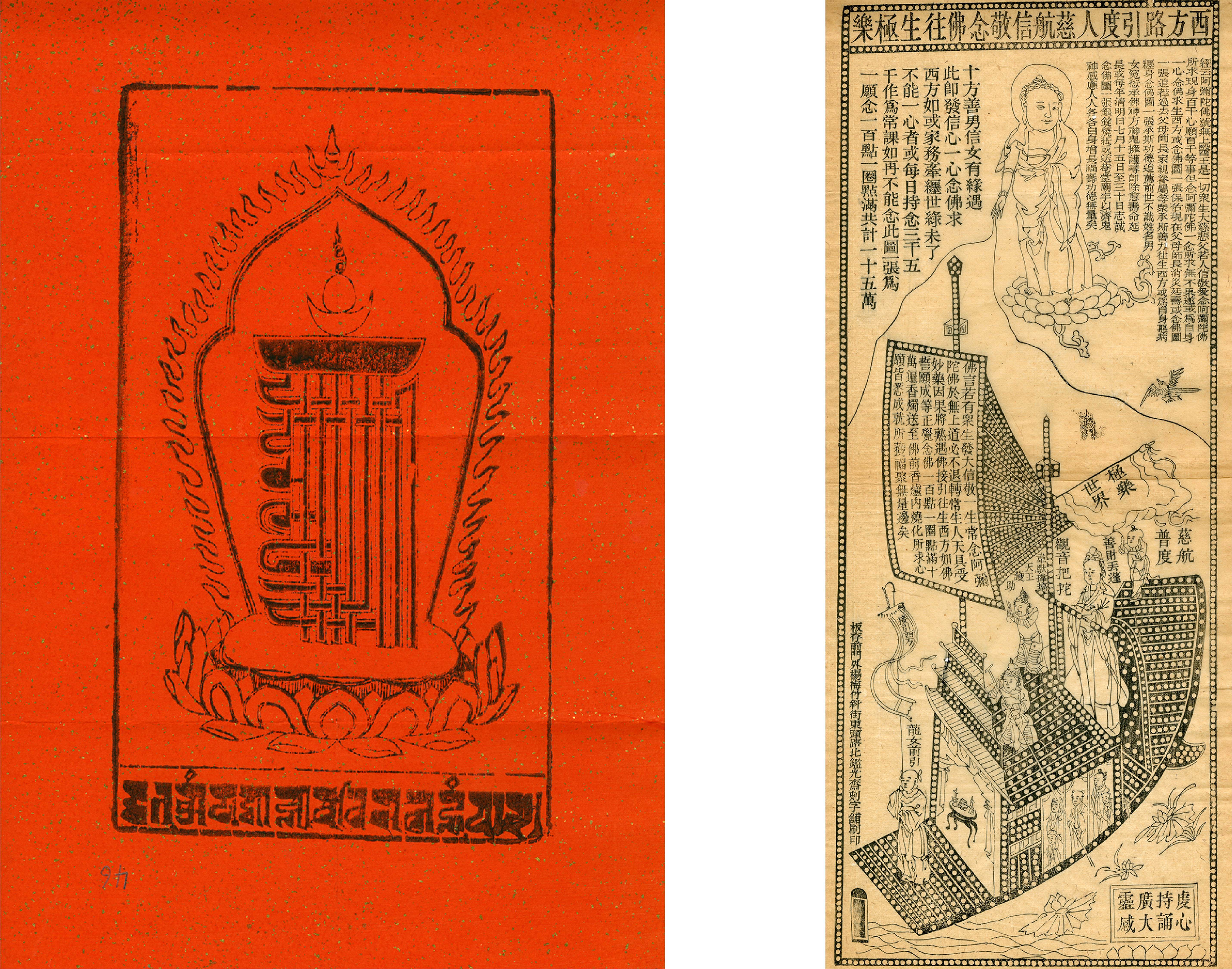Tibetan Wood Block Prints
November 1, 2018
This month's feature is two Tibetan woodblock prints. They are numbered in the museum collection as 1988.4018.46 and 1988.4087. The first print is an image of the Kalachakra Tenfold Powerful One, which is a Buddhist mandala, or a symbol representing the universe. It is included in a book of Tibetan Buddhist prints with depictions of common deities and mandalas. The red background is covered in golden flecks, and the print is black ink on thin paper. The second print symbolizes following Buddhism as a journey across the 'bitter sea', or the suffering inherent in life, to reach the end of the sea, or Nirvana. It is part of a set of five duplicate prints, all black ink on very thin paper.
The first print is a simplified representation of the Tenfold Powerful One - the symbol is usually represented in color - and is part of a method for purification of outer and inner aspects of the universe. There are Sanskrit letters within the flame border, with each letter representing a different aspect of the universe. Reading down from the top bar, the letters are part of the inner aspects of the mantra, Ham Ksha Ma La Va Ra Ya. The three symbols stacked on top of the bar are visarga, bindu, and nada, and represent the outer aspects of the universe - the moon, sun, and emptiness. The Kalachakra has become very popular globally due to the broadcasting of the Kalachakra Empowerment led by the Dalai Lama.
The second print was made to be hung in a house to prevent misfortune, and is meant to be read daily. It depicts the Mercy Godess, Guan Yin, guiding the boat sailing on the bitter sea. A mantra is given with the image, Namo Guan Shi Yin Pusa. The meaning of the phrase is that of a greeting, and the meaning of each word is as follows: Namo means homage to or refuge in, Guan means to observe or care, Shi means world, Yin means sound or voice, and Pusa means Bodhisattva. The image and its mantra are related to the Lotus Sutra 25:2.4, which describes Guan Yin protecting travelers of the bitter sea.
We hope that you enjoyed this peek at our collection! We'll be back next month with another artifact. Have a great November!
Category: Decorative Papers
Region of Origin: Asian
Keywords:
Woodblock

